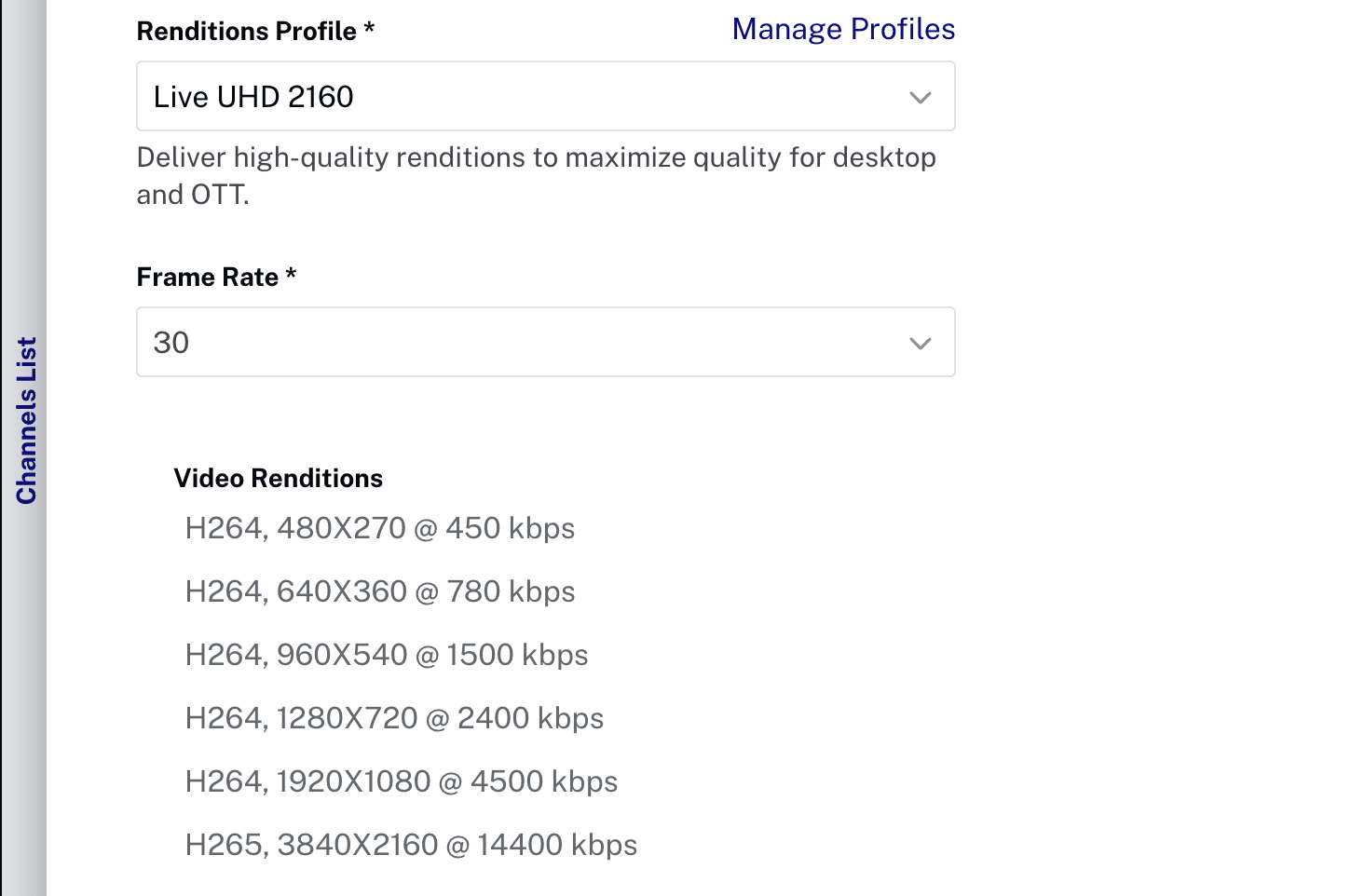4K Support in NextGen Live
4K streaming delivers exceptional video quality with four times the resolution of standard HD (1080p). NextGen Live's 4K support enables broadcasters to deliver premium viewing experiences for high-end content such as sports, concerts, and premium channels.
After completing this guide, you should be able to:
- Understand 4K streaming requirements
- Configure 4K live streams using supported protocols
- Optimize 4K streams for different viewing scenarios
Audience
Broadcasters and technical teams who need to deliver high-quality 4K live streaming experiences using NextGen Live.
4K Streaming Prerequisites
Other Requirements
- 4K-capable encoding hardware or software
- High-bandwidth internet connection
Supported Input Protocols
NextGen Live supports 4K streaming through multiple input protocols, each with specific codec support:
| Protocol | Supported Codecs | Description |
|---|---|---|
| RTMP | H.264 only | Real-time streaming protocol. Reliable but limited to H.264 codec input. |
| SRT | H.264 only | Secure Reliable Transport. Supports H.264 codec input. Recommended for 4K streaming. |
| RTP | H.264 only | Real-time Transport protocol. Fast but limited to H.264 codec input. |
Input and Output Codecs
NextGen Live uses H.264 for input and automatically transcodes to HEVC (H.265) for output delivery:
- Input: H.264 codec required for all ingest protocols
- Output: HEVC codec provides optimal quality and bandwidth efficiency for 4K viewers
Creating a 4K Live Channel
To create a 4K live stream, you'll need to select an appropriate 4K ingest profile during channel creation:
- Log in to Studio and open the Live module.
- Click Create Channel to create a new live channel.
- Enter your Channel Name and configure basic settings.
- In the Renditions Profile dropdown, select a 4K profile such as:
- Live UHD 2160 - For 4K Ultra HD streaming
- Live UHD 2160 HDR - For 4K Ultra HD streaming with HDR
- Live UHD 2160 HFR - For 4K Ultra HD streaming with HFR

- Complete other channel settings as needed and click Save.
4K Streaming Requirements
Bandwidth Requirements
- Input bandwidth: Minimum 20 Mbps, recommended 25+ Mbps for 4K H.264 input
- Network stability: Consistent connection without any packet loss
Hardware Requirements
- Encoder: Hardware encoder with H.264 support required for input
- CPU: High-performance processor for software encoding
- Memory: Sufficient RAM for 4K processing
Limitations and Considerations
- Bandwidth costs: 4K streaming consumes significantly more bandwidth
- Processing overhead: Requires more CPU and memory resources
- DRM compatibility: 4K HEVC does not work with Widevine on Google Chrome due to browser limitations
Troubleshooting 4K Streams
Common Issues
- Buffering or playback issues
-
- Check viewer's bandwidth and device capabilities
- Verify adaptive bitrate ladder includes lower resolutions
- Monitor encoder performance and network stability
- Poor video quality
-
- Increase input bitrate if bandwidth allows
- Verify encoder settings match recommended parameters (see Brightcove Live: Best Practices)
- Check for network packet loss or instability
- Stream interruptions
-
- Monitor input connection stability
- Consider using redundant input streams
